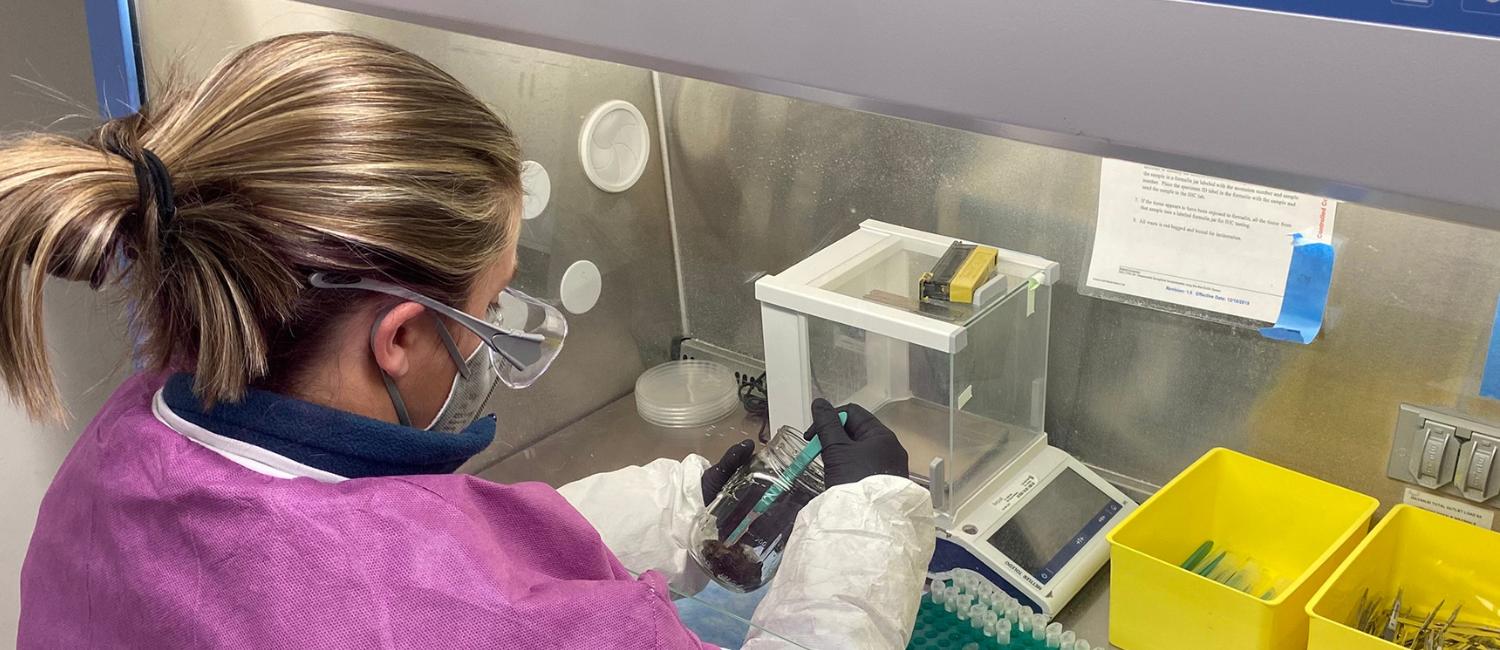 Casey Maynard, sample resource manager at Penn Vet's Wildlife Futures Program, weighs fecal material from a deer that was infected with chronic wasting disease. These samples will go to Anna Kashina's lab for microbiome analysis. (Image: Brooke Ezzo/Wildlife Futures Program)
Casey Maynard, sample resource manager at Penn Vet's Wildlife Futures Program, weighs fecal material from a deer that was infected with chronic wasting disease. These samples will go to Anna Kashina's lab for microbiome analysis. (Image: Brooke Ezzo/Wildlife Futures Program)
Chronic wasting disease (CWD) is a transmissible, neurodegenerative disorder in deer that causes inability to eat, stumbling, drooling, and lack of fear of humans, and in all cases is ultimately fatal. “You can have deer that are infected live for two or more years, and it can take a very long time before they show clinical signs of it,” says Michelle Gibison, diagnostic laboratory testing manager at the University of Pennsylvania School of Veterinary Medicine's Wildlife Futures Program. That means they can infect other deer in that time.
CWD is a prion disease, meaning it results from a normal cellular protein that has misfolded and then spreads by misfolding additional copies of the protein. Gibison says while there is no evidence CWD can spread to humans, there is concern this could change, as other prion diseases—such as Mad Cow Disease—can spread through the consumption of infected meat. She says CWD cases are increasing, not only in Pennsylvania and the United States but also across the world.
Through collecting and analyzing fecal samples from animals with and without CWD, a new collaborative study from Penn Vet and other researchers sheds light on how CWD impacts the gut microbiome and provides a potential tool for disease surveillance. The researchers found that several types of gut bacteria could differentiate between CWD-positive and -negative animals. Their paper “Prospective fecal microbiomic biomarkers for chronic wasting disease” was published in Microbiology Spectrum.
Continue Reading on Penn Today!